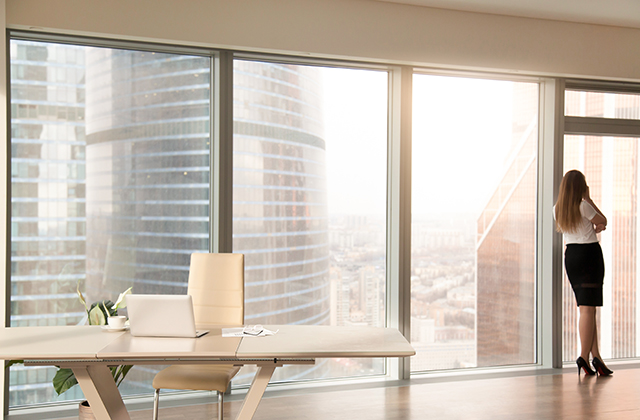
Why Tempered Glass Is Used for Table Tops?
Tempered glass is used for table tops because it is much stronger and more durable than regular glass. The tempering process involves heating the glass to a high temperature and then rapidly cooling it, which causes the outer surface of the glass to compress and the inner surface to expand. This creates a state of compression on the surface and tension on the inside, making the glass much more resistant to breaking and shattering. Additionally, tempered glass is also safer because when it breaks it crumbles into small, rounded pieces rather than sharp shards. Sydney glass is not an ordinary glass compared to any country in the world.
What shortens the life of tempered glass?
There are a few factors that can shorten the life of tempered glass:
- Impact: Tempered glass is more impact-resistant than regular glass, but it can still break if it is hit with enough force.
- Scratching: Tempered glass is more scratch-resistant than regular glass, but it can still be scratched if it is exposed to abrasive materials.
- Heat: Tempered glass can withstand high temperatures better than regular glass, but it can still break if it is exposed to extreme heat.
- Chemical: Certain chemicals can weaken the tempered glass, causing it to break or shatter more easily.
- Age: Tempered glass will eventually lose some of its strength over time, becoming more susceptible to breaking or shattering.
It’s important to note that tempered glass is not completely indestructible, and it will eventually break if enough force is applied. However, it is much more durable than regular glass and will last much longer under normal conditions.
Prevents the thermal breakage of tempered glass
There are a few ways to prevent thermal breakage of tempered glass:
- Avoiding sudden temperature changes: Sudden changes in temperature can cause thermal stress on the glass, leading to breakage. To prevent this, it is important to avoid exposing the tempered glass to rapid temperature changes, such as placing hot items on a cold surface or vice versa.
- Using low-E glass: Low-E glass is specially coated to reduce the amount of heat that can pass through it. This can help to prevent thermal breakage by reducing the amount of thermal stress on the glass.
- Using heat-strengthened glass: Heat-strengthened glass is similar to tempered glass, but it is not cooled as quickly during the tempering process. This makes it less likely to break due to thermal stress.
- Using laminated glass: Laminated glass is made by sandwiching a layer of plastic between two layers of glass. This can help to prevent thermal breakage by reducing the amount of thermal stress on the glass.
- Using insulating curtains or shades: Insulating curtains or shades can help to reduce the amount of heat that enters a building, which can help to prevent thermal breakage by reducing the amount of thermal stress on the glass.
- Limiting the exposure to direct sun: Direct sun can cause thermal stress on the glass, leading to breakage. It is important to limit the exposure of tempered glass to direct sun, and use window treatment, such as blinds, shades or curtains, to block the direct sunlight.
It’s important to note that tempered glass is more resistant to thermal stress than regular glass, but it can still break under certain conditions. Therefore, it is important to take precautions to prevent thermal breakage.
Tempered glass is harder and more durable than annealed glass
Yes, tempered glass is generally harder and more durable than annealed glass. Tempered glass goes through a process of heating it to a high temperature and then rapidly cooling it, which causes the outer surface of the glass to compress and the inner surface to expand. This creates a state of compression on the surface and tension on the inside, making the glass much more resistant to breaking and shattering.
On the other hand, annealed glass is regular glass that has been cooled slowly after being heated. This process does not change the mechanical properties of the glass, so it is not as strong or durable as tempered glass. It is also more prone to breaking or shattering when it is impacted or exposed to temperature changes.
In summary, tempered glass is stronger and more durable than annealed glass because of the tempering process it goes through. It is also safer than annealed glass because when it breaks it crumbles into small, rounded pieces rather than sharp shards.
Tempered glass takeaway after being used for table tops
Tempered glass is a popular choice for table tops because it is much stronger and more durable than regular glass. The tempering process causes the outer surface of the glass to compress and the inner surface to expand, making the glass much more resistant to breaking and shattering. Additionally, tempered glass is also safer because when it breaks it crumbles into small, rounded pieces rather than sharp shards.
However, it’s important to keep in mind that tempered glass is not completely indestructible, and it can still break if enough force is applied. Additionally, it can be weakened by impact, scratching, heat, chemicals, and age. To prolong the life of tempered glass table tops, it is important to avoid exposing the glass to sudden temperature changes, abrasive materials, extreme heat, certain chemicals, and direct sunlight. Additionally, it is important to take care of it, such as using coasters and placemats to prevent scratches, and avoiding rough handling.
Overall, tempered glass is a good option for table tops due to its strength, durability and safety features but it is important to take care of it properly to prolong its lifespan.